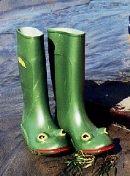I'm bingeing on YA novels this week, in a mad effort to read, or re-read, everything in order to plan my syllabus and get my book order submitted for my Representing Adolescence class. It's very hard to decide how one wants to represent Representing Adolescence, and I have far more ideas than I do weeks in the semester. Winnowing out, and developing some coherence from what remains, is the real challenge.
I just finished The Secret Diary of Adrian Mole by Sue Townsend, which is and is not a YA book, but certainly does represent a certain kind of adolescence. I enjoyed the book but don't plan teaching it; other considerations aside, I know my students would just fall apart at all the British slang (and this despite the American edition "glossary" in the back of the book).
Not much to say about Adrian Mole at the moment except the experience of reading it was very like my experience of reading The Curious Incident of the Dog in the Night-time. The britishness, yes, the split-parents sideplot, but more than anything, the painfully naive narrators. Any book where the reader knows more than the narrator - or rather, understands more than the narrator - is both endlessly fascinating to me, and intensely painful. it makes me feel dreadfully sorry for the narrators, because it's so clear that they don't get what's going on, and everyone else around them does. And so the narrators become unwitting butts of every joke imaginable.
Cringe-worthy and empathy-inducing. But still good, and fascinating, because of all the codes and nuances that the reader must be able to decipher to produce the effect of the unknowing narrator. These kinds of books are maybe the clearest example, to my mind, of the way that both author and reader construct the novel - because the effect of the book depends on the reader knowing more than the narrator. If she doesn't, if she and the narrator are precisely in the same place, then the book is entirely different.
amazing, amazing. But now I have to scurry into reading some girlie girl books - I have The A-List and The Boyfriend Book on tap. I'm learning an awful lot about YA and gender: books with boy protagonists are all about the boy protagonists; books with girl protagonists are all about boys, in one way or another. This is obviously not an absolute, brightline categorization; but it does seem to be an awfully substantial trend. We'll pick it apart in class. I'm so excited about teaching this class it is almost pathetic.
Sunday, July 18, 2010
Subscribe to:
Post Comments (Atom)




2 comments:
Is 'Adrian Mole' the one that includes regular measurements of his dick? I think I remember Caroline reading that one, if so.
Your class sounds really exciting. I can tell it's something you're very passionate about and I know you'll do a great job! I've noticed this too, how girls will embrace books with a male protagonist, but boys will only read books about boys. If it's about a girl it's automatically "girly", "gay" or not interesting enough. I guess books with strong female protagonists are threatening in a way, and I've actually noticed this in gay-themed YA as well. Even if the main character happens to be male, there's often a much stronger, more confident/athletic male character in the book. Someone the main character secretly desires or looks up to, someone he wants to be like. He's often straight or "straight acting". I wonder why this is? Oh, you should read "Brave New Girl" by Louisa Luna. You'd like it.
Post a Comment